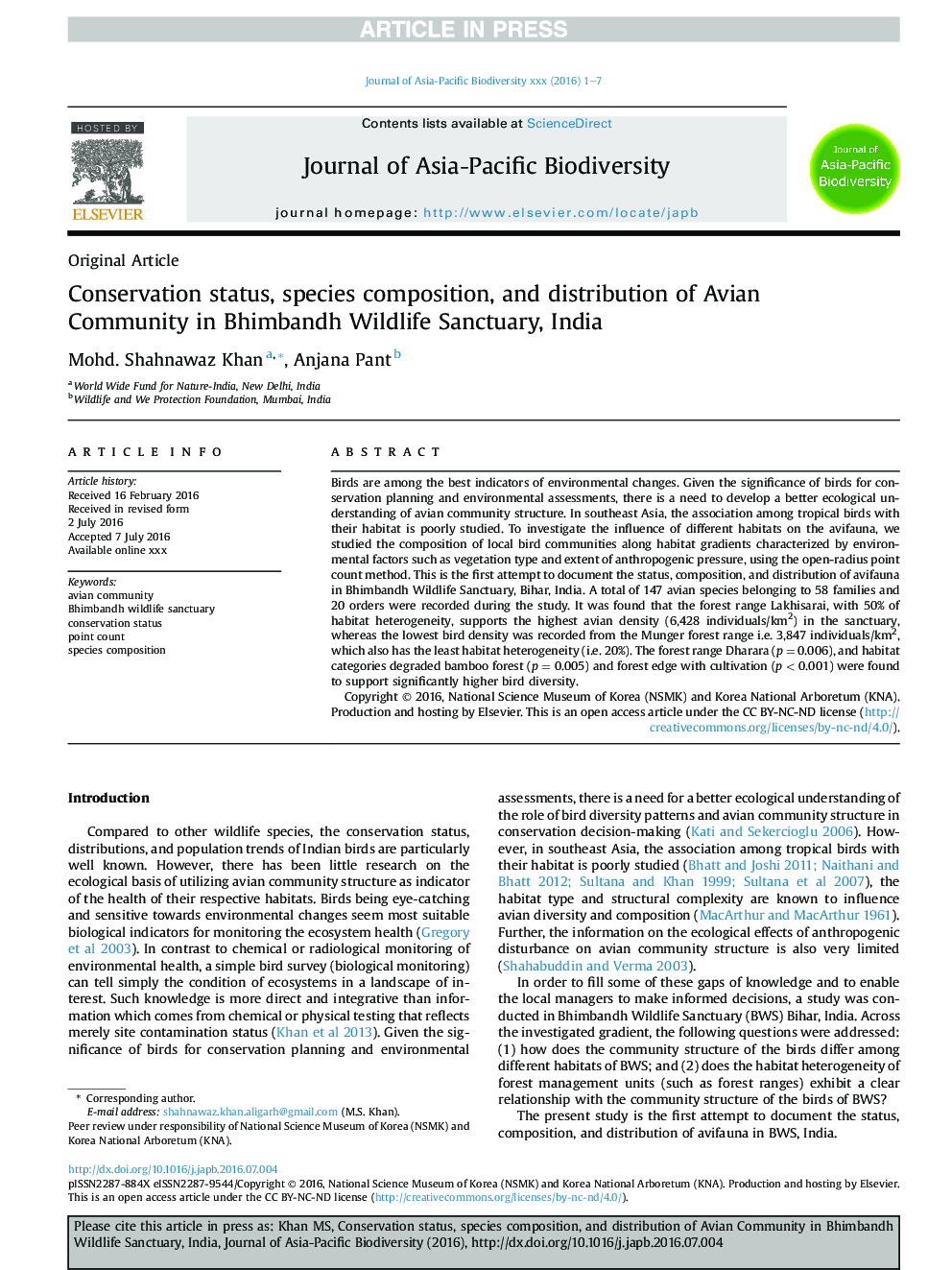| Article ID | Journal | Published Year | Pages | File Type |
|---|---|---|---|---|
| 8848807 | Journal of Asia-Pacific Biodiversity | 2017 | 7 Pages |
Abstract
Birds are among the best indicators of environmental changes. Given the significance of birds for conservation planning and environmental assessments, there is a need to develop a better ecological understanding of avian community structure. In southeast Asia, the association among tropical birds with their habitat is poorly studied. To investigate the influence of different habitats on the avifauna, we studied the composition of local bird communities along habitat gradients characterized by environmental factors such as vegetation type and extent of anthropogenic pressure, using the open-radius point count method. This is the first attempt to document the status, composition, and distribution of avifauna in Bhimbandh Wildlife Sanctuary, Bihar, India. A total of 147 avian species belonging to 58 families and 20 orders were recorded during the study. It was found that the forest range Lakhisarai, with 50% of habitat heterogeneity, supports the highest avian density (6,428 individuals/km2) in the sanctuary, whereas the lowest bird density was recorded from the Munger forest range i.e. 3,847 individuals/km2, which also has the least habitat heterogeneity (i.e. 20%). The forest range Dharara (p = 0.006), and habitat categories degraded bamboo forest (p = 0.005) and forest edge with cultivation (p < 0.001) were found to support significantly higher bird diversity.
Related Topics
Life Sciences
Agricultural and Biological Sciences
Ecology, Evolution, Behavior and Systematics
Authors
Mohd. Shahnawaz Khan, Anjana Pant,
